Five Grounding Techniques to Cultivate Resilient Ensembles
In 2008, I began creating performances about sexual violence. Following the final dress of the first performance in 2008, a member of the ensemble raised his hand and exclaimed, “I feel like shit.” He went on to discuss how the show was starting to influence his life outside of the rehearsal space. Other performers shared they had nightmares about being raped or reaching out to help someone in trouble only to see their hands turn to dust. I came to find out later, they were exhibiting signs of secondary trauma stress or vicarious trauma—something that happens when people take on others’ traumatic experiences. As a young twenty-something, I could not believe what I was being told and that I had created a space for such harm to occur. I thought it was a positive process for the performers because they told me about conversations with their partners, family, and friends full of vulnerability and compassion toward the subject of sexual assault. It was not until we were ready to open that I realized the process for creating work like this had to be unlike any other rehearsal process I had been through before.
I draw upon multiple disciplines to create an optimal rehearsal environment where ensembles feel comfortable taking risks and pushing controversial work to their fullest potential.
Since then, I have continued to create original interdisciplinary performances about sexual violence as well as work centered on shame and hate. I also founded a company, Grey Box Collective, with a mission to only create work that tackles tough conversations. In addition to being an artist, I am a health and wellness educator. My personal process has evolved over the past decade, and in turn, so has the process of my company. I draw upon multiple disciplines to create an optimal rehearsal environment where ensembles feel comfortable taking risks and pushing controversial work to their fullest potential.
Artists in America today are processing and creating work that addresses our tumultuous social and political climate. Over the years, I have refined a process specifically for devising performances on difficult topics. I will outline the overarching concepts of the method and give specific examples below, in the hopes that they may prove useful to artists creating work in and of this moment.
1. When dealing with resistance it is best to go around it, rather than through it.
For this reason, the content of the show and the forms that we use to create work are separated. The first third of the process is getting to a place where we understand the structure being used. This could be the different ways of incorporating text, props, and clothing, or a score of contact improv. We must understand how these containers work before we fill them with complex social issues. This also allows performers to play and take risks with the form without also needing to have consideration for the narrative. I have discovered that separating form and content gives performers a buffer from taking on the story in a secondary trauma type of way. This increases the sustainability of the project.
In 2016, I directed a piece about rape culture titled, It's Not That Simple. An important component of this performance was illustrating a positive outcome after a negative experience. Several performers in the piece were adamantly opposed to the idea that experiencing sexual violence could ever become a positive event. The next rehearsal, I asked performers to devise short duets about post-traumatic growth (PTG), which is the idea of gaining greater personal strength through adversity. Once performers were able to physically embody PTG, they were able to create movement and text about a positive change after an experience of sexual violence.

Performers: Tomás J. Stanton, Adam Mendez Jr., Preston Thompson, Nicholas Chizek, Patrick Morrison, Briana Bryant, Stephanie Sorosiak, Lauren Scott, Kara Quinn Ward-Tobin, Anya Hernandez, and Raji Ganesan. Photo by Justin Russell.
2. Plan rehearsals with a rigid framework, but keep great flexibility within them.
This patterned approach creates an environment that is rich for creativity. It relaxes the body by sinking into a predictable structure while simultaneously leaving space for enough variation to keep the individual alert and ready for anything that may happen next. The framework consists of: check-ins, warm-ups (conditioning, grounding, and ensemble building), working the show, and check-outs. The moments that bookend rehearsals are invaluable for directors to assess the tone of the group and reevaluate the needs for the rehearsals to follow.
In those check-ins and outs, performers are asked to share any stairway thoughts giving them each a guaranteed opportunity to express any need or feeling. One question I often pose is, “What have you done to take care of yourself?” The answers provided—which are often as small as eating a piece of chocolate or as large as seeing their therapist—give me an indication of my ensemble’s perception of self-care. I have found self-care to be an important part of this process as it brings about a high level of accountability within the collective.
In 2014, we began a tradition where one performer would kick and clap to signal we were done for the evening. Since then, we’ve slowly added other components to this tradition, including: taking turns asking each other how we are feeling and what we are thinking about, physically grounding ourselves by brushing or utilizing other bodywork techniques, and—most recently—by etch-a-sketch-ing ourselves (i.e. we shake all the heaviness of a show out of our bodies before sealing the rehearsal). Performers have said they found checking-in and out of rehearsal to be one of the most beneficial forms of self-care through the rehearsal process.
3. Don’t underestimate the warm-up.
The warm-up has the greatest potential in setting up a group for success in being able to be vulnerable with themselves and each other as they take on difficult conversations. The conditioning component focuses on the overall strength of the body with an emphasis on core work. This benefits the ensemble in a few ways. Humans often associate feeling strong with feeling light. Building physical strength in the body can lead to greater mental strength to move through the challenges work like this presents. Physical exertion has been shown to help manage anxiety by flexing the muscles to increase circulation. Additionally, a strong core leads to greater confidence and connection with the self. As performers consistently place themselves in front of audiences and each other, it is important they keep their sense of self to avoid taking on their character’s emotions.
Immediately following the conditioning component of the warm-up section, performers are guided into at least two grounding techniques. There is space for individual grounding and group grounding. Individual grounding draws upon somatic practices. Common ones include breath work, guided imagery, and meditation or mindfulness activities. A few quick and simple components to involve include asking the ensemble to notice the sound of silence, inviting them to take an inventory of everything they are in contact with, and pretzel breathing. (Pretzel breathing combine awareness of the inhales and exhales with the arms crossed over the chest in a pretzel type of shape.) This influences the parasympathetic nervous system similarly as a hug by lowering heart rate and naturally deepening the breath.
Group grounding techniques we often use include the pendulum and the waterfall. I observe the group’s body language as they move through these exercises to gain a better understanding of how grounded they feel as opposed to how trusting they are. In a pendulum—or any full weight-bearing activity—notice where the pelvis is placed. If the movement occurs with the pelvis going with the fall, the individual has a deep sense of feeling rooted. If they leave their pelvis behind and only allow half their weight to be caught, they are not feeling as deeply rooted. This indicates how much I can push an individual within a rehearsal.
The final portion of the warm-up is giving people a chance to play together. It is important for the ensemble to embrace that laughter can happen in a rehearsal where we are focused on serious subjects. This final step of the warm-up allows for some release and energizes the group as a whole. One ensemble loved playing the improv game Hot Spot where someone sings a popular song in the middle of the circle to be replaced by someone else singing a song related to the previous song. Inevitably, someone would hop in the center and start belting a song only to realize they didn't know the words. The muddling of lyrics or made-up words being sung often resulted in eruptions of laughter. This can also lead into a discussion about the role laughter plays when working through difficult subjects and how or why the audience might also laugh.
There are times when it is necessary to create a subtle ritual that can be done on-stage in front of an audience.
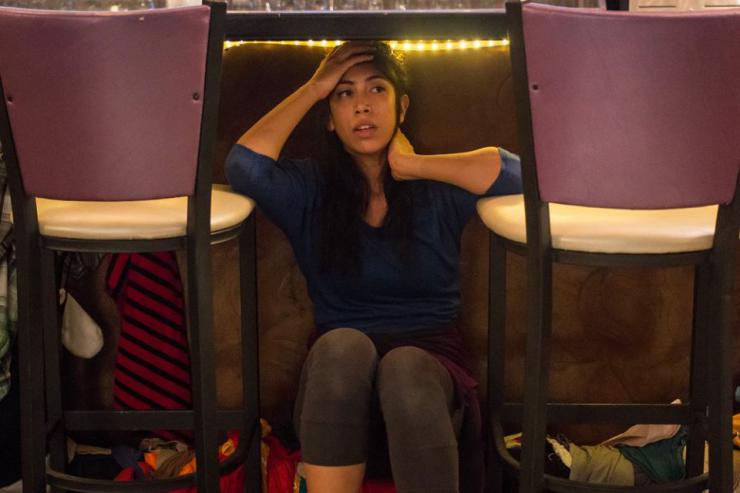
4. Allow some techniques practiced in rehearsal to make their way to the performance.
This has usually been on an individualized basis. In the past, I have had performers develop tactile rituals and physical practices to help ease them into and out of each performance. One ritual that was common was removing jewelry before rehearsal or a performance began and then putting it back on once they were out of costume. The ritual typically included an internal mantra about stepping into a role or back into the self. I encourage performers to allow this ritual to include an external sensation in addition to the internal conversation to ensure the effectiveness. Some days may be easier to step in and out of serious work than others. If there are days they are struggling to have the mind make these transitions from character to human, the external sensation of cool jewelry or warm water splashing their face will support the shift out of performance mode and into their separate lives.
There are times when it is necessary to create a subtle ritual that can be done on-stage in front of an audience. In 2011, I worked with a woman who experienced regular flashbacks to her personal attack while rehearsing and performing a show about sexual violence. Two strategies that worked for her on stage were to either dig her nails into her hand or squeeze someone else's hand. We worked it out with ensemble members near her during the performance to understand what was needed and how to work with her throughout the process. In another show about shame culture titled, Fool Me Once…Fool Me Twice… (FMOFMT), the all-female cast would workout together to online videos marketed for women. The remarks made in these workout videos seeped into the devising process and became one of the more remarkable vignettes in the show by connecting physical exercise with sex techniques.
5. When choosing how to implement the above practices within your ensemble, trust your intuition and listen for feedback—both verbal and non-verbal—to discover what may work within your company.
Each ensemble is different. Certain structures stick and others result in settings the group back. I have asked individuals to generate movement for a show outside of rehearsal and come prepared with material to teach. In FMOFMT, this movement became the score for the entire performance. However, I find this to be a rare and lucky occurrence. More often than not, when performers generate movement on their own it becomes too disconnected from each other and results in disjointed, unusable materials. An example that has backfired on me is the use of formal assessments and inventories of individual’s stress and self-care. In 2015, a stress management assessment led to individuals psychoanalyzing themselves and removing themselves from the group before the process really began. I recommend being transparent with performers as you incorporate new techniques to allow for greater risk-taking in their art making.
Since the 2008 confrontation with the cast, I still see some signs of secondary trauma stress or vicarious trauma taking place throughout the rehearsal process and into the run of the show. I find these indicators reveal themselves in the days leading up to opening similar to the group ten years ago. The difference has been the ensembles have foundational tools to manage these struggles as they come up. Conversations between the cast and audience usually help to mitigate these challenges by creating space for dialogue and hearing how their work on stage is helping someone else. The entire process constructs a supportive net for the ensemble. The greater the support, the greater challenges they can overcome, and the greater influence the performance will have on audiences to tackle their own tough conversations.

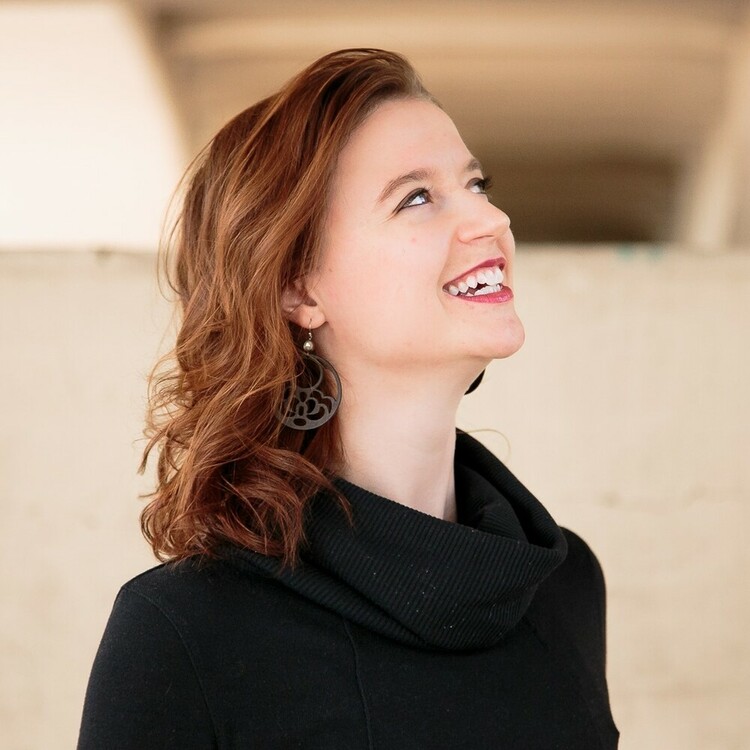
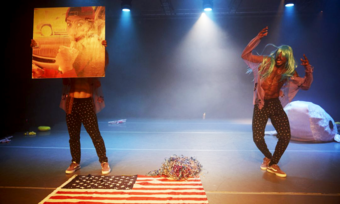


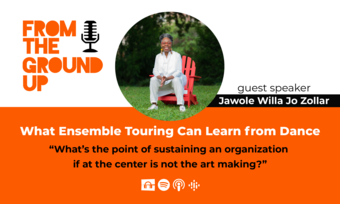


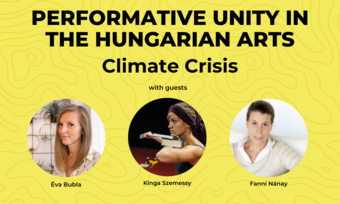





Comments
The article is just the start of the conversation—we want to know what you think about this subject, too! HowlRound is a space for knowledge-sharing, and we welcome spirited, thoughtful, and on-topic dialogue. Find our full comments policy here
It's perfect article
Hi Molly! I'm curious if you have ever partnered/collaborateded with a Drama Therapist or Creative Arts Mental Health professional in your collaborative process as a way to alleviate the trauma stress and pressure on you to be the sole facilitator of those hard conversations? I myself am a former (someday once again) devised theater maker and current drama therapist in training and I am particularly interested in the potential crossover between devised work and drama therapy. I'm also interested to see if there is room in our field for specific trainings for devised artists to prepare them to work with populations which may or may not be working through trauma. I look forward to checking out your website and work!
Hey Dani! Great questions. I am not the sole facilitator of the difficult conversations. As a director, it's more about navigating and managing the group dynamic shifts before and after those conversations led by professionals. The company partners with mental health professionals and social workers primarily. I worked with a trauma specialist who worked within multiple arts disciplines and inspired many of these practices. I would love to have a full time mental health professional in the company for this work and hope to move in that direction in the near future. I think there is a direct link between devised work and drama therapy that hasn't been fully explored in the field and a need for more workshops around it.